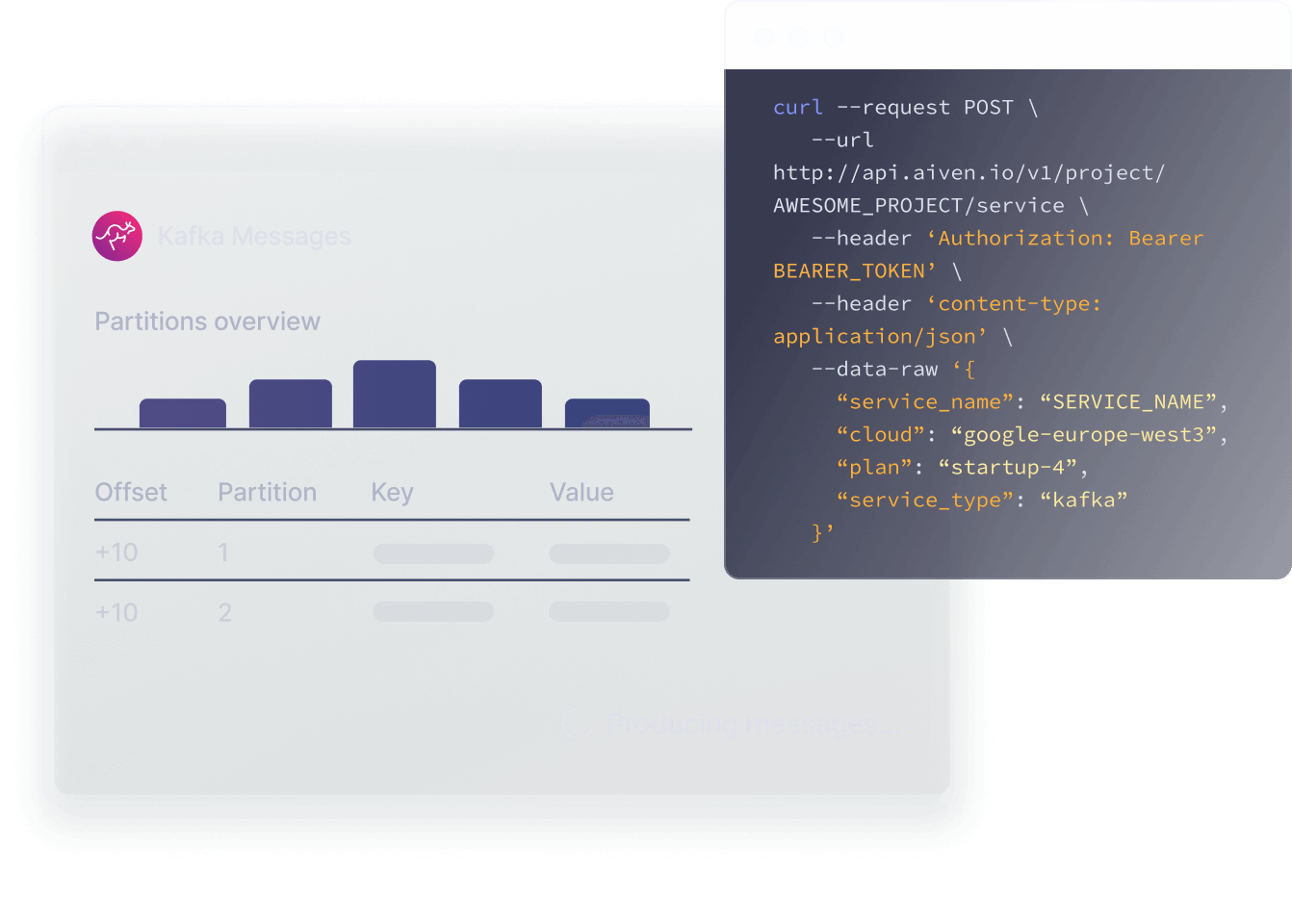Aiven for Apache Kafka®
A better approach to managed Kafka
Get complete control in any cloud with Aiven for Apache Kafka's fully managed, enterprise-grade streaming service.
99.99% SLA
50+ connectors
Runs on any cloud
Start for free
Includes $300 in free credits
Trusted by developers at


































